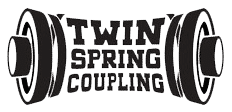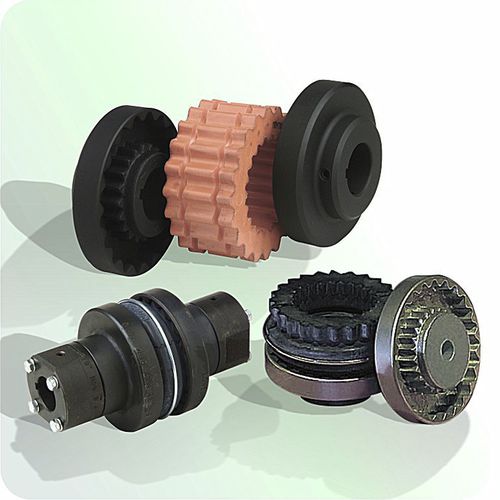Demystifying Industrial Coupling Terminology – A Guide to Hubs and Spiders and Locking Mechanisms
Table of Contents
Industrial couplings play a crucial role in power transmission systems, connecting shafts and transferring torque between components. However, the terminology used in this field can be confusing for newcomers. This comprehensive guide will break down the essential terms and components of industrial couplings, focusing on hubs, spiders, locking mechanisms, and more. We’ll also highlight some of the major OEM manufacturers for each type of product.
Understanding Coupling Basics
Before diving into specific components, let’s establish a foundation of what couplings are and their primary functions.
Industrial couplings are mechanical devices used to connect two shafts, allowing power to be transmitted from one to the other. They serve several important purposes:
- Transmitting torque
- Accommodating misalignment
- Reducing vibration
- Protecting equipment from overload
- Allowing for easy maintenance and replacement
Now, let’s explore the key components and terminology associated with industrial couplings.
Hubs: The Core of the Coupling
Hubs are the central components of most coupling designs. They are typically made of metal and attach directly to the shafts being connected. Hubs come in various styles and materials to suit different applications.
Types of Hubs
- Straight Bore Hubs: These have a simple cylindrical bore that fits over the shaft.
Tapered Bore Hubs: Featuring a conical bore, these hubs provide a tighter fit and are often used in high-torque applications.
Splined Hubs: These have internal splines that mate with external splines on the shaft, offering excellent torque transmission.
QD (Quick Disconnect) Hubs: Designed for easy installation and removal, these hubs use a tapered bushing system.
Major OEM Manufacturers of Coupling Hubs
- Lovejoy, Inc.: Known for their wide range of coupling solutions, including various hub designs[1].
- Rexnord: Offers a comprehensive line of couplings and hubs for diverse industries.
- TB Wood’s: Specializes in power transmission components, including coupling hubs.
Spiders: The Flexible Element
In jaw-type couplings, the spider is the star of the show. This elastomeric component sits between the two hubs, absorbing shock and vibration while allowing for slight misalignment[1].
Spider Characteristics
Spiders come in different materials and hardness levels, each suited for specific applications:
- Polyurethane: Offers excellent wear resistance and can handle high temperatures.
- Nitrile Rubber (Buna-N): Provides good oil resistance and moderate temperature capabilities.
- Hytrel: A thermoplastic polyester that combines flexibility with strength.
Others like Bronze are also available but only for users who have close to 0 degree of misalignment and in a punishing environment, including extreme heat, food and water
Spider Designs
- Standard Solid-Center Spider: The most common design, suitable for general power transmission applications.
Open-Center Type (OCT): Ideal for situations where equipment must be positioned close together.
Snap-Wrap: Features an open-end design for easy installation and removal without disturbing alignment.
Load Cushions: Separate blocks that can be easily installed and removed, often used in heavy-duty applications[1].
Major OEM Manufacturers of Coupling Spiders
- Lovejoy, Inc.: Offers a wide range of spider designs and materials[2].
- Fenner Drives: Known for their high-quality elastomeric components, including coupling spiders.
- Martin Sprocket & Gear: Provides various coupling solutions, including replacement spiders.
Locking Mechanisms: Securing the Connection
Locking mechanisms ensure that the coupling remains securely attached to the shafts. There are several types of locking mechanisms used in industrial couplings:
Types of Locking Mechanisms
- Keyways and Setscrews: A traditional method using a key inserted into matching slots on the shaft and hub, with setscrews for additional security.
Taper Lock Bushings: Conical bushings that create a tight fit between the hub and shaft when tightened.
Shrink Discs: External locking devices that apply pressure around the hub, creating a strong frictional connection.
Clamping Hubs: Feature a split design that clamps onto the shaft when bolts are tightened.
Major OEM Manufacturers of Locking Mechanisms
- Fenner Drives: Offers a range of locking devices, including taper lock bushings.
- Ringfeder: Specializes in shaft-hub connections, including shrink discs and locking assemblies.
- Climax Metal Products: Known for their keyless locking devices and shaft collars.
Other Important Coupling Components
Flanges
Flanges are disc-shaped components that attach to the ends of shafts or equipment. They’re often used in conjunction with flexible coupling elements to connect machinery.
Spacers
Spacers are used to create distance between coupling hubs, allowing for easier maintenance and accommodating longer shaft separations.
Guards
While not part of the coupling itself, guards are crucial safety components that enclose rotating couplings to prevent accidents.
Types of Industrial Couplings
Now that we’ve covered the basic components, let’s briefly explore some common types of industrial couplings:
1. Jaw Couplings : Consist of two hubs with interlocking jaws and an elastomeric spider. They’re versatile and good at dampening vibration[3].
2. Grid Couplings : Use a flexible steel grid element between two hubs, offering high torque capacity and torsional flexibility.
3. Gear Couplings: Feature external teeth on the hubs that mesh with internal teeth on a sleeve, providing high torque capacity and misalignment capability.
4. Disc Couplings: Use flexible metal discs to transmit torque, offering zero backlash and high torsional stiffness.
5. Elastomeric Couplings: Rely on rubber or other elastomeric elements to provide flexibility and vibration damping.
Selecting the Right Coupling
Choosing the appropriate coupling for your application involves considering several factors:
- Torque requirements
- Speed
- Misalignment capabilities
- Environmental conditions (temperature, chemicals, etc.)
- Space constraints
- Maintenance needs
It’s often beneficial to consult with coupling manufacturers or experienced engineers to ensure you select the best coupling for your specific needs.
Maintenance and Troubleshooting
Regular maintenance is crucial for ensuring the longevity and performance of industrial couplings. This typically involves:
- Visual inspections for wear or damage
- Lubrication (for certain coupling types)
- Checking alignment
- Replacing worn components (e.g., spiders in jaw couplings)
Common issues to watch for include:
- Excessive vibration
- Unusual noises
- Premature wear of elastomeric components
- Loosening of locking mechanisms
Demystifying Industrial Coupling Terminology – A Guide to Hubs and Spiders and Locking Mechanisms : Conclusion
Understanding the terminology and components of industrial couplings is essential for anyone working with power transmission systems. From hubs and spiders to locking mechanisms and various coupling types, each element plays a crucial role in ensuring efficient and reliable operation.
By familiarizing yourself with these terms and the major OEM manufacturers in the field, you’ll be better equipped to select, maintain, and troubleshoot industrial couplings in your applications. Remember, when in doubt, don’t hesitate to consult with experts or refer to manufacturer specifications to ensure you’re making the best choices for your specific needs.
As technology advances, we can expect to see continued innovations in coupling design, materials, and performance. Staying informed about these developments will help you make the most of these critical power transmission components in your industrial applications.
Check out our entire range of all industrial coupling supplies, from all the major manufacturers
Citations:
[1] https://www.lovejoy-inc.com/resources/technical-articles/spiders-are-key-to-jaw-coupling-performance/
[2] https://prosourceindustrial.com/lovejoy-spider-couplings
[3] https://www.guardiancouplings.com/-/media/Files/Literature/Brand/guardian-couplings/related/brochures/p-7728-gc.ashx
[4] https://www.ondrivesus.com/shaft-couplings-clutches/jaw-couplings-spider
[5] http://www.couplinganswers.com/2014/10/coupling-failure-analysis-jaw-couplings.html
[6] https://blog.rw-america.com/blog/topic/spider-coupling
[7] https://www.jbj.co.uk/spider-couplings.html
[8] https://www.wmberg.com/products/couplings/spider-couplings

